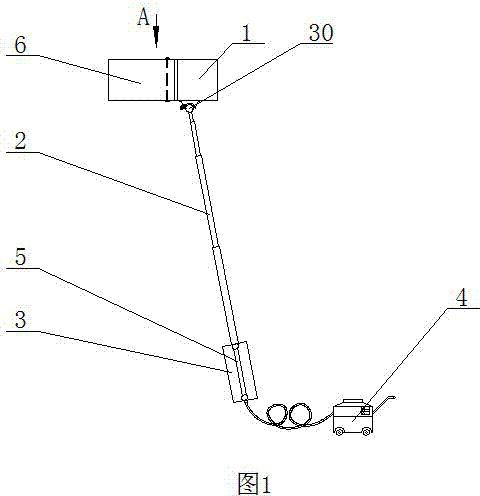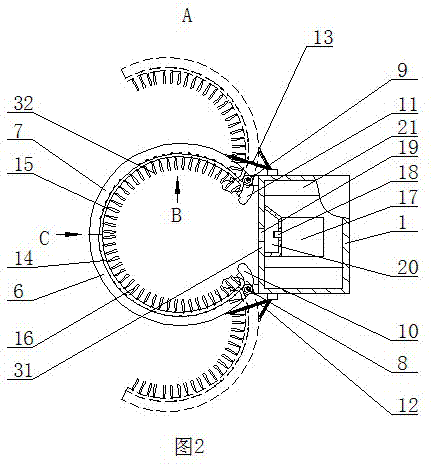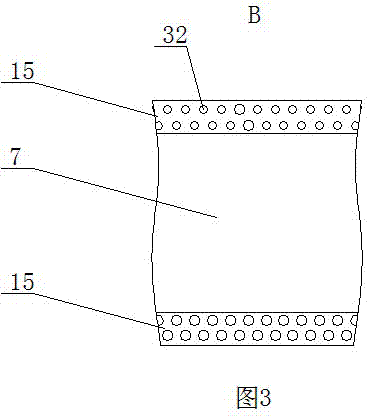Method for killing longhorn beetle larvae with microwave
A technology of longhorn beetle larvae and microwave, which is applied to the device, application, animal husbandry and other directions of catching or killing insects, can solve the problems of poor insecticidal effect, large workload, and difficult to popularize, and achieves easy popularization and easy operation. Effect
- Summary
- Abstract
- Description
- Claims
- Application Information
AI Technical Summary
Problems solved by technology
Method used
Image
Examples
Embodiment Construction
[0021] The method for killing long beetle larvae with microwaves according to the present invention, the concrete steps are as follows:
[0022] ①Detect the distribution of longhorn beetle larvae on the tree trunk. It can be seen that there are fresh wormholes on the trunk or the bark at the wormholes turns black and there is a jelly flow out, which confirms the existence of longhorn beetle larvae;
[0023] ②Determine the microwave irradiation range: take the wormhole as the center, and the microwave irradiation range is within 22 cm above and below the wormhole;
[0024] ③ Prepare the microwave irradiation machine: the microwave irradiation machine has a telescopic rod 2, the top of the telescopic rod 2 is connected to the housing 1, a microwave transmitter 17 and a controller 21 are installed in the housing 1, and a through hole 19 is provided on the inner side plate 31 of the housing 1. The two ends of the inner side plate 31 of the housing 1 are respectively hinged to the...
PUM
 Login to View More
Login to View More Abstract
Description
Claims
Application Information
 Login to View More
Login to View More - Generate Ideas
- Intellectual Property
- Life Sciences
- Materials
- Tech Scout
- Unparalleled Data Quality
- Higher Quality Content
- 60% Fewer Hallucinations
Browse by: Latest US Patents, China's latest patents, Technical Efficacy Thesaurus, Application Domain, Technology Topic, Popular Technical Reports.
© 2025 PatSnap. All rights reserved.Legal|Privacy policy|Modern Slavery Act Transparency Statement|Sitemap|About US| Contact US: help@patsnap.com



